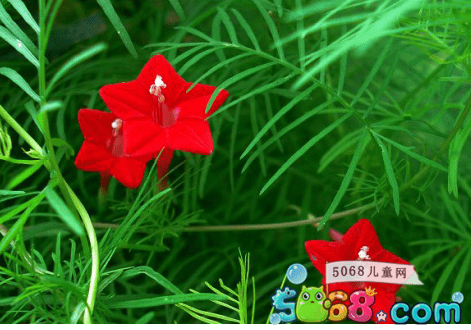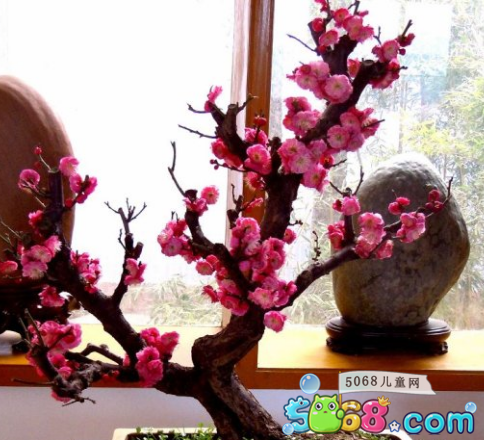Culture methods and cultivation management of feather-leaf pineapple
Pinnate dill is an extremely beautiful garden ornamental plant. The survival rate according to this method is relatively high. Attention should also be paid to cultivation management methods. The following small series introduces the breeding methods and cultivation management of leaf dill, hoping to help everyone.

Breeding method of leaf dill
1. Choose a flowerpot: Choose the appropriate size flowerpot. The bottom of the pot is covered with two tiles or a thin foam. It is important to ensure that potting soil is not washed away by water and can produce excess water. Out in time. Place a layer of ceramsite or crushed red brick on the tile or foam as a drainage layer, about 2 to 3 cm thick.
2, the upper pot: the pinnate dill seedlings potted or raised for several years of large plants into the pot, first put a piece of 2~3 cm thick coarse grain matrix at the bottom of the pot as a drainage layer, that is, sprinkle a layer of completely decomposed organic fertilizer as a base fertilizer, the thickness is about 1-2 cm. It is covered with a substrate about 1 to 2 cm thick and then placed in the plant to separate the fertilizer from the roots to avoid burning.
3, fertilizer water: dill leaves feathers poured water, placed in a cool environment for a week. When transplanting seedlings, first dig planting holes, sprinkle a layer of organic fertilizer at the bottom of the planting holes as base fertilizer (base fertilizer), about 4-6 cm thick, then cover a layer of soil and put it into the seedlings, separate the roots to avoid burning the roots. After placing seedlings, backfill soil, cover roots, pour soil with feet, pour once.
4. Pruning: In winter, when plants enter dormancy or semi-dormancy, branches should be cut off, such as thin, pests, dead and dense. Branches can also be combined with cuttings.
5. Remove the pot: Put the flowers to be replaced on the ground, beat the pot first, shake the roots and separate them from the pot wall, turn the pot upside down on the left hand, gently clamp the plants with the index finger and middle finger of the left hand, lean against the pot with the wrist and fingertips, tap the pelvic floor with the right hand, and then push the roots down from the bottom hole with the female fingers to let the plants come out. After removal, tap the potting soil gently with both palms to remove excess soil.
6, change the basin: pinnate dill conservation grows very fast, when it grows to a certain size, it is necessary to consider changing it to a larger basin, so that it continues to flourish. The cultivated soil and composition ratio of basin variation can be selected from garden soil: slag =3: 1, or garden soil: medium coarse river sand: sawdust (slag)=4: 1: 2, or paddy soil 1 pond mud and humus soil.
Cultivation conditions of dill leaves
Since dill is native to tropical regions, it is warm, cold, frost-resistant, grows very slowly at low temperatures and requires a sunny environment.
Most species do not require strict daylight hours, but dill flowers require less than 12 hours of daylight to bloom.
The soil is not required, but it grows well on fertile and loose soil.
The seeds of dill are about 139,000 seeds, which can be used for 3 to 4 years. Fruit maturity is inconsistent, easy to fall off after maturity.
Cultivation and Management of Dill Leaf
Dill is planted after a late frost. Early colonization is generally not recommended in areas where nighttime temperatures are still relatively low. Dill has a strong ability to self-sow. If you don't care about flowering sooner or later, you can use self-seeded seedlings in good years of cultivation. However, due to the lack of seed selection and emergence, greening results are even worse. Dill planting quantity is large, base fertilizer fertilization, sowing, fertilization.
Plant burrows, take out plastic seedlings and plant them in burrows. One hole per hole is covered with fine soil, then watered and the soil is sealed.
Seedling planting spacing or soil fertility should be appropriately increased; seedlings should be planted later, growth should be delayed, plant spacing should be appropriately reduced. Timely watering can promote the growth of stems and leaves, but be careful not to be too long, so as not to delay flowering.
Early artificial aids introduced vines into scaffolding, fences, trees, or other supports. In the middle and late stages, the plant itself has a strong ability to climb, and it does not need to control it except for modeling, allowing it to climb and entangle. Potted plants should be watered and fertilized regularly.
Time: 2019-05-08 Click:
- Prev

How to preserve potted geraniums
Recently, many friends have asked me how to maintain potted geraniums. Here, I will introduce to you my experience in maintaining potted geraniums: 1. Potted soil. Potted geraniums can be cultivated with humus soil, peat soil plus 1pm 5 river sand and a small amount of cake fat as base fertilizer. It can also be used as compost soil.
- Next

Effective methods for maintenance of plum blossom before winter
Plums like to prescribe in the cold winter, but if they are well preserved before winter, then it is helpful to bloom. The following editor will introduce you to the effective methods of plum blossom maintenance before winter. I hope everyone likes it. 1. Plum blossom watering comes autumn before winter comes. At this time
Related
- Fuxing push coffee new agricultural production and marketing class: lack of small-scale processing plants
- Jujube rice field leisure farm deep ploughing Yilan for five years to create a space for organic food and play
- Nongyu Farm-A trial of organic papaya for brave women with advanced technology
- Four points for attention in the prevention and control of diseases and insect pests of edible fungi
- How to add nutrient solution to Edible Fungi
- Is there any good way to control edible fungus mites?
- Open Inoculation Technology of Edible Fungi
- Is there any clever way to use fertilizer for edible fungus in winter?
- What agents are used to kill the pathogens of edible fungi in the mushroom shed?
- Rapid drying of Edible Fungi

